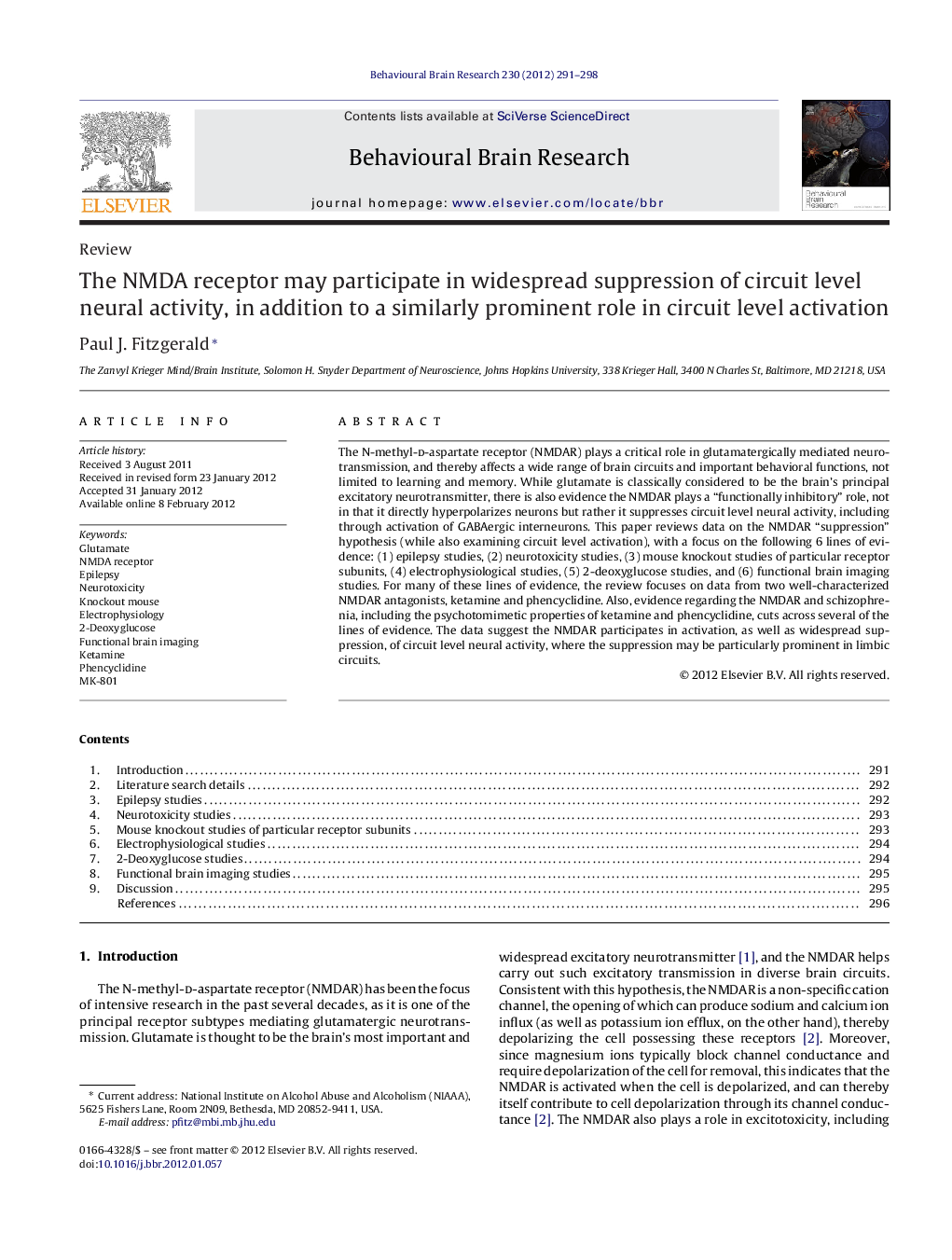| کد مقاله | کد نشریه | سال انتشار | مقاله انگلیسی | نسخه تمام متن |
|---|---|---|---|---|
| 6259610 | 1289989 | 2012 | 8 صفحه PDF | دانلود رایگان |

The N-methyl-d-aspartate receptor (NMDAR) plays a critical role in glutamatergically mediated neurotransmission, and thereby affects a wide range of brain circuits and important behavioral functions, not limited to learning and memory. While glutamate is classically considered to be the brain's principal excitatory neurotransmitter, there is also evidence the NMDAR plays a “functionally inhibitory” role, not in that it directly hyperpolarizes neurons but rather it suppresses circuit level neural activity, including through activation of GABAergic interneurons. This paper reviews data on the NMDAR “suppression” hypothesis (while also examining circuit level activation), with a focus on the following 6 lines of evidence: (1) epilepsy studies, (2) neurotoxicity studies, (3) mouse knockout studies of particular receptor subunits, (4) electrophysiological studies, (5) 2-deoxyglucose studies, and (6) functional brain imaging studies. For many of these lines of evidence, the review focuses on data from two well-characterized NMDAR antagonists, ketamine and phencyclidine. Also, evidence regarding the NMDAR and schizophrenia, including the psychotomimetic properties of ketamine and phencyclidine, cuts across several of the lines of evidence. The data suggest the NMDAR participates in activation, as well as widespread suppression, of circuit level neural activity, where the suppression may be particularly prominent in limbic circuits.
⺠The excitatory NMDA receptor suppresses widespread circuit level neural activity. ⺠This hypothesis is supported by epilepsy, neurotoxicity, and mouse knockout data. ⺠Also supported by electrophysiology, 2-DG, and functional brain imaging data. ⺠Has implications for the pharmacotherapy of major depression and schizophrenia.
Journal: Behavioural Brain Research - Volume 230, Issue 1, 21 April 2012, Pages 291-298